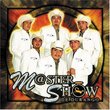| All Artists: Brahms, Stokowski, Philadelphia Orchestra Title: Symphony 2 in D Major / Symphony 4 in E Minor Members Wishing: 0 Total Copies: 0 Label: Archipel Release Date: 5/21/2002 Album Type: Import, Original recording remastered Genre: Classical Style: Symphonies Number of Discs: 1 SwapaCD Credits: 1 UPCs: 675754507022, 7640104006596 |
Search - Brahms, Stokowski, Philadelphia Orchestra :: Symphony 2 in D Major / Symphony 4 in E Minor
 | Brahms, Stokowski, Philadelphia Orchestra Symphony 2 in D Major / Symphony 4 in E Minor Genre: Classical |
Larger Image |
CD DetailsSimilar CDs |
CD ReviewsStoki at his Best Andre Gauthier | 09/08/2007 (5 out of 5 stars) "These recordings spring forth from the Philadelphia Orchestra with Stokowski in 1929 (2nd) and 1933 (4th).
After having listened to the wild ride which comprises the Tchaikovsky fourth and fifth symphonies from the same era, I was expecting a bit of excess and a lot of finely etched portamenti. Indeed the perfectly unified sting slides are in evidence, but not in nearly the same quantity as the Tchaikovsky symphonies. These supple renditions of Brahms' even numbered symphonies are those of a conservative(!), Brahmsian, at least for that period in time, who hears and feels the richness in both scores but doesn't pump any unnecessary excess into them. The Second Symphony rarely strays from the standard tempi that one hears today. The sound is lush, as expected and I think there are more basses than normal. The dynamics are special considering the year is 1929. Most recordings of that era are "flatened out" dynamically and demonstrate only a range between mf and forte. The first movement has that perfect feeling that is caught between 3/4 and 1. It sounds as though it could be in either kind of beat at a given moment. The entire work culminates with a flashy ending, but it too is not over baked and makes for satisfying consumption in every way. The first and second movements of the Fourth hold no great surprises. The balance in the opening of the adagio is splendid in the winds. That is not something easily accomplished. This is Stokowski at his plush best. It sets up the rest of the symphony perfectly. It wouldn't be a Stoki recording from any time period were it not for some pulls and pushes on the tempi. The "fun" scherzo of the Fourth Symphony surges forward after the trio section. ("Fun" is Brahms's own word for the movement, not mine. He thought it quite a joke!) Stokowski pushes the main theme from beginning to end to find just the right dramatic flair. The main curiousity here is the missing triangle, unless it was removed by overuse of noise reduction. Then again, the score may not have had it, or Stoki, known for reorchestration, might have taken it out himself. The scherzo is perfectly offset by the grand finale that is the fourth movement. The conductor takes the ground bass underpinning and uses it in all sorts of fascinating ways. The penultimate chord in the cadence of the ground bass (a V chord with a lowered fifth, sometimes called a "French Sixth Chord") is leaned on but not made to blat out by the brass. This is an important harmony in Brahms because it is the only time he uses it in this way in a symphony. The fact that the recordings themselves are very clear and free of 78 rpm noises adds greatly to the value of these historic treasures. And while they are documents of their time, they also transcend other recordings of the period because they are so well captured. I don't know if Nikisch or van Bulow would have taken these routes, but Stokowski had taken master classes with Nikisch in around 1906. I think that can be heard here. The effect that both artists had on the German wing of conductors marks the origins of Stokowski's ideas. Of course there are no extant recordings of Bulow, but there are a ton of reviews available to anyone with Nexus or Times Select. They talk about Bulow's complete Beethoven sonatas or his appearances at Carnegie Hall and in with the Boston Symphony. One can get an idea of what he was up to from this printed material. And once Bulow dumped Wagner (or was it the other way around?), he became a great champion of Brahms, conducting the premiere of the Fourth Symphony. My general sense is that Stokowski is one of the last of the Bulow/Nikisch line with consideration to how long he managed to perform. This Stokowski set for me goes right to the top of my Brahms collection, and it is a very large one indeed. It is joined there by Eugen Jochum's EMI set with the London Philharmonic that is a revelation in stereo. For one thing it has all the repeats of the opening movements. There are lots of good Brahms sets out there, and I suspect by not including von Karajan, Furtwangler or Toscanini here I have commited the ultimate sin of omission. But Jochum seems to understand the razzle dazzle as well as the contemplative nature of Brahms with a perfect sense of balance. He's my modern pick. His Fourth symphony is truly stunning with its excellent sound. So is Stokowski's. Once you start to listen you don't care about stereo because this is yet another Stokowski set that every serious collector should own, not because it is historic, or represents archaic ideas about phrasing. No, quite the contrary; because Stokowski is the bridge between the old and the new in a way that almost no other conductor ever achieved, his Brahms lives still in lyric splendor." |



